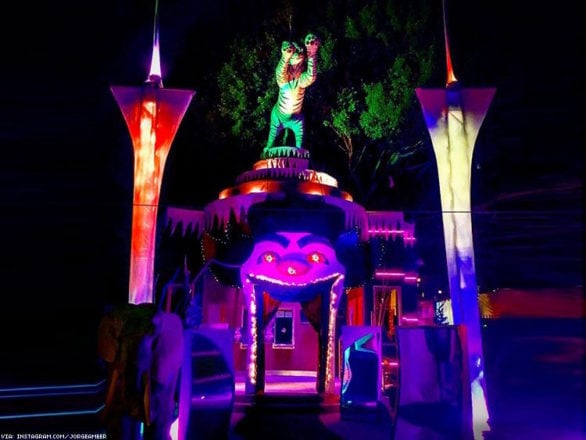
The landmark Circus Disco, welcoming patrons with it’s famous clown mouth entrance, was a safe space for queer and transgender people of color. The club closed Jan. 1, 2016. Photo via Instagram.
BOYLE HEIGHTS – I first went to Circus Disco in 2009 and saw what all the fuss was about.
It was a hot July night, and I was sitting with friends on the club’s mammoth patio, which was packed with hundreds of people.
CIRCUS DISCO A SAFE SPACE
We were laughing about one of our friends and his latest hook-up, but I also saw many types of queer and trans people. There were lesbians with their faux hawks and their “lipstick lesbian” partners, boys vogueing amongst themselves, the “vaquero” (cowboy) men, transgender woman of color displaying their beautiful outfits and drag queens galore.
Everyone was free to be themselves and be with their LGBTQ community. They were not feeling judged. They felt safe.
Before Stonewall, the Black Cat in Silver Lake had LGBTQ protest
CIRCUS DISCO DEMOLISHED
Circus Disco was an iconic and historic space for the gay Latinx community. The mega, two-level club – whose entrance was a giant clown face – had five rooms filled with disco balls and laser lights and DJs playing various beats. The club was housed in a former warehouse on Santa Monica Boulevard just steps from Highland Boulevard., and was open more than four decades.
But Circus Disco wasn’t just a club to the gay Latinx community; for many people, it was a place to find and build a community. This was our place.
Related article: Los Angeles LGBT Center: We don’t care about gay Latino history
But Circus Disco is gone. It closed January 1, 2016, and was demolished and swept away – to make room for almost 700 luxury condos and a retail space. But Circus Disco – and its sister, Arena, another colossal nightclub that sat on the same the six-acre property as Circus Disco – didn’t outlive its necessity.
California and Los Angeles have some of the nation’s best legal protections for LGBTQ people, but the queer-trans people-of-color community still needs spaces that belong to them, like Circus Disco.
But the loss of Circus Disco’s isn’t an isolated incident.
The death of queer and trans-people-of-color nightlife is happening across Los Angeles.
Silver Lake, Echo Park, MacArthur Park and Boyle Heights, neighborhoods at one point, largely populated by immigrant and working-class folks, are experiencing gentrification and displacement. But what about the communities within community? LGBTQ people of color are being excluded from the conversation, pushed out of their homes and watching their spaces vanish.
MORE CLUBS VANISH
In the past few years, several clubs-bars have closed:
- Le Barcito: This historic LGBTQ bar, nightclub, formerly know as the Black Cat, was a central location for the LGBTQ civil rights movement. It was the site of a rebellion against police harassment that pre-dated Stonewall. The bar has reopened – the iconic black cat logo is still there – but it caters to a heterosexual hipster crowd.
- The Other Side: An LGBTQ piano bar where onlookers saw everyday people perform anything from a Broadway musical number to an Adele cover, was closed down and turned into Hyperion Public.
- MJ’s nightclub: Home to a Middle Eastern and Latino night, this watering hole reopened as an ultra chic and modern cocktail bar.
WHERE ARE OUR SPACES?
While downtown L.A. has seen the emergence of two LGBTQ clubs, Redline and Precinct, many people are dismissing the idea that gentrification and displacement are impacting queer and transgender people of color.
But the issue isn’t how many new clubs have opened and will open, but how many clubs are specifically for queer and transgender people of color.
